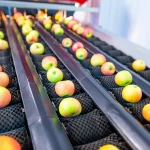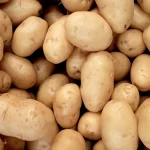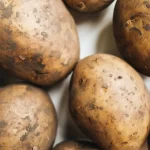Importance of Post-Harvest in Potato Cultivation
Post-harvest management is a crucial stage in potato cultivation, as it directly influences the quality of the final product that reaches the market. Proper handling and storage ensure the preservation of tubers, minimize losses, and maximize profitability. Additionally, adequate post-harvest practices facilitate the commercialization of potatoes by maintaining their quality during transport and distribution.
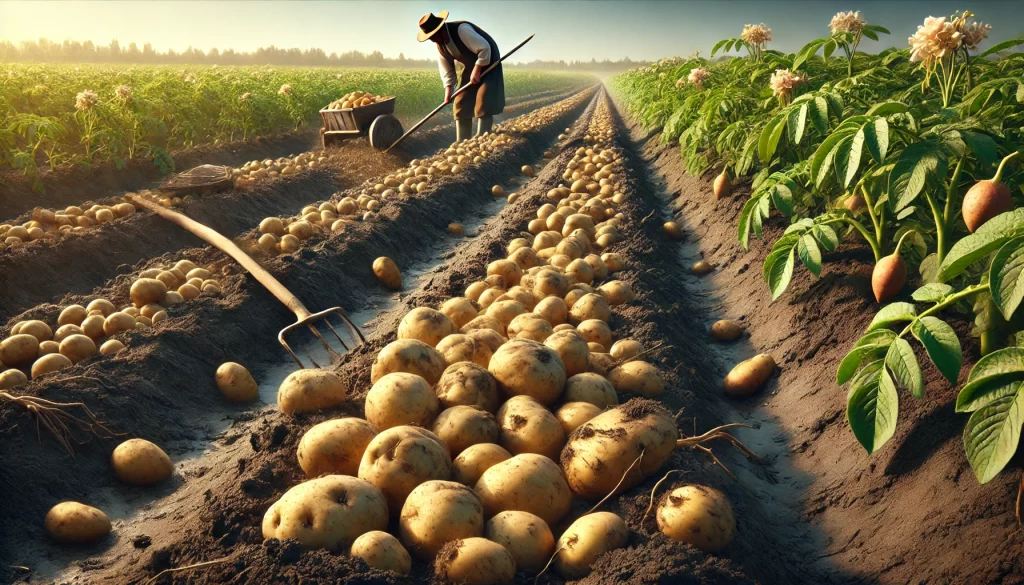
Harvesting Process
Determining the Optimal Harvest Time
The timing of the harvest is fundamental to ensuring the quality and yield of the tubers. Maturity indicators include:
- Foliage Yellowing: Indicates that the tubers have reached their maximum size.
- Skin Firmness: Tubers should have firm skin that does not peel easily when rubbed.
- Sample Analysis: Conduct field sampling of tubers to assess their maturity.
Harvesting Techniques
- Manual Harvesting: Used in small plots, it allows careful handling of tubers to minimize damage.
- Mechanized Harvesting: Requires specialized machinery and is ideal for large areas but must be done carefully to avoid damage to the tubers.
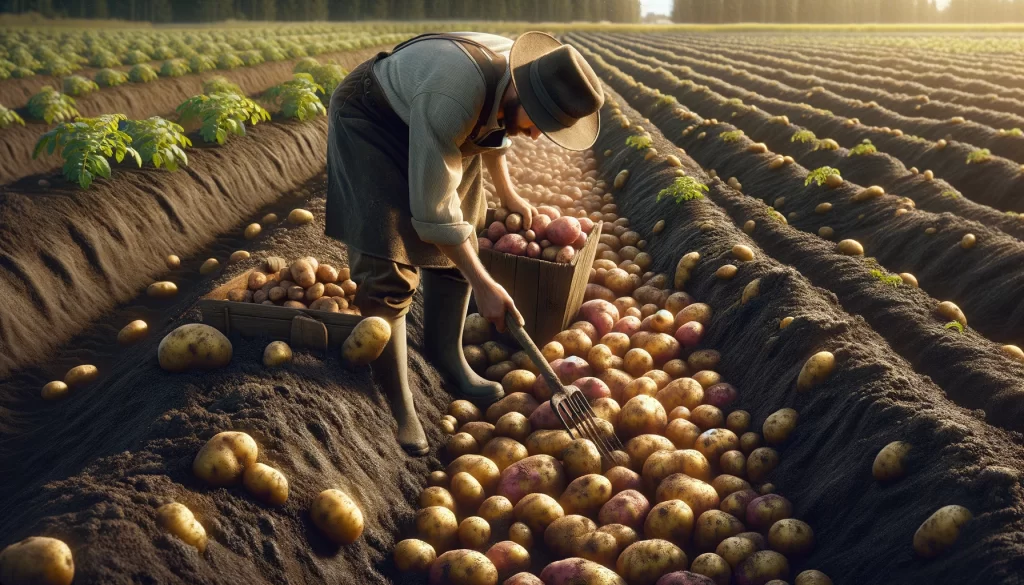
Precautions During Harvest
- Avoid Mechanical Damage: Tubers damaged during harvest are more susceptible to diseases and reduced quality.
- Soil Conditions: Avoid harvesting in overly wet or dry soils, as this can increase the risk of physical damage.
Post-Harvest Management
Curing the Tubers
Importance of Curing
Curing is an essential process for healing any surface damage on tubers, which helps prevent pathogen entry and reduces moisture loss during storage.
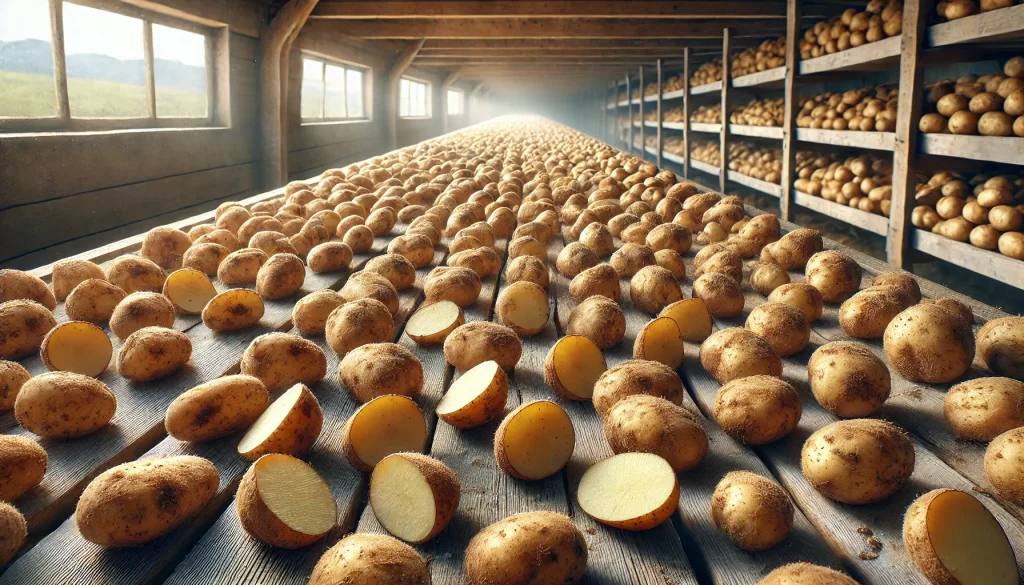
Optimal Curing Conditions
- Temperature: Maintain tubers at a temperature between 12 and 15°C.
- Relative Humidity: Ideally between 85% and 95% to prevent dehydration.
- Duration: The curing process generally lasts between 10 and 14 days.
Potato Storage
Storage Requirements
- Temperature: Tubers should be stored at a constant temperature of 4 to 7°C to prevent sprouting and disease development.
- Relative Humidity: Maintain humidity at 85-90% to prevent weight loss due to dehydration and preserve tuber firmness.
- Ventilation: Ensure good air circulation to prevent moisture buildup and mold growth.
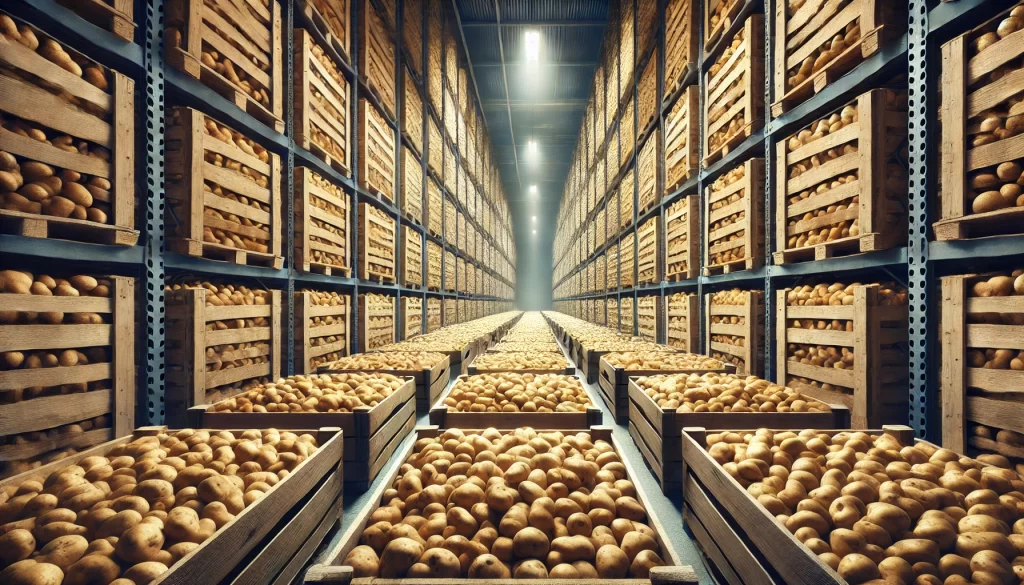
Storage Methods
- Bulk Storage: Suitable for large volumes, with well-ventilated piles.
- Container Storage: Used to facilitate handling and transportation.
- Controlled Storage Chambers: These chambers allow precise control of temperature and humidity, ideal for long-term preservation.
Pest and Disease Control in Storage
Extended storage can lead to the emergence of pests and diseases. It is essential to implement control measures such as:
- Regular Monitoring: Inspect tubers periodically for signs of deterioration or infestation.
- Preventive Treatment: Apply specific fungicides or disinfectants before storage.
- Stock Rotation: Use a rotation system to ensure that older tubers are sold first.
Commercialization of Potato Crops
Grading and Selection
Grading Criteria
- Size: Tubers are graded by size, ranging from small to large.
- Shape and Appearance: Uniformity in shape and the absence of external defects are crucial to meeting market standards.
- Internal Quality: Evaluation of the absence of diseases, internal blemishes, or physiological defects.
Benefits of Grading
- Added Value: Tubers graded by quality and size can be sold at higher prices.
- Regulatory Compliance: Ensures that the product meets the quality standards required by local and international markets.
Packaging and Presentation
Types of Packaging
- Mesh Bags: Commonly used for bulk sales, they allow ventilation but are less effective at protecting against physical damage.
- Cardboard Boxes: Offer better protection and are ideal for markets where presentation is crucial.
- Plastic Packaging: Used for smaller potatoes or markets demanding more attractive presentation.
Packaging Considerations
- Protection: Packaging should protect tubers from physical damage during transport.
- Labeling and Branding: Include information about the origin, variety, and characteristics of the product, as well as quality certifications if applicable.
Transportation
Transportation Methods
- Land Transport: The most common method for short and medium distances. It is important that vehicles have adequate ventilation.
- Maritime Transport: Used for exports, where potatoes are transported in refrigerated containers to maintain quality.
- Air Transport: Generally reserved for high-value potatoes in international markets due to the high cost.

Transportation Conditions
- Temperature Control: It is essential to maintain a constant temperature throughout the transport process.
- Physical Protection: Ensure that tubers are well-packaged to avoid damage during transport.
Marketing Strategies
Market Analysis
- Market Demand: Understand market preferences, including the most demanded varieties, preferred sizes, and peak consumption periods.
- Market Prices: Monitor prices in different markets to determine the optimal time for sale.
- Competition: Analyze the competition to identify opportunities and adjust marketing strategies.
Commercialization Channels
- Local Markets: Direct sales in local markets, which can offer competitive prices and lower transportation costs.
- Distributors and Wholesalers: Ideal for large volumes, where wholesale prices are negotiated.
- Export: Requires compliance with international quality standards and obtaining the necessary certifications.
Added Value and Differentiation
- Quality Certifications: Obtaining certifications such as Global GAP or organic certifications can open doors to premium markets.
- Brand and Attractive Packaging: Developing a recognized brand and attractive packaging can help differentiate the product in saturated markets.
- Primary Processing: Offering minimally processed products, such as peeled or cut potatoes, can add value and increase profitability.
Trends in Potato Commercialization
Demand for Organic Products
The market for organic potatoes is growing, driven by the demand for natural and healthy products. Producers who can meet the requirements for organic certification can access this expanding market.
Innovations in Packaging
Advances in packaging technology, such as the use of biodegradable materials or packaging that extends shelf life, are gaining ground in the potato industry. Implementing these innovations can offer significant competitive advantages.
E-commerce and Direct Sales
E-commerce is emerging as an important channel for selling agricultural products, including potatoes. Offering direct-to-consumer options through online platforms can improve profitability and reduce reliance on intermediaries.
 AgronoBlog – Agriculture Blog
AgronoBlog – Agriculture Blog 